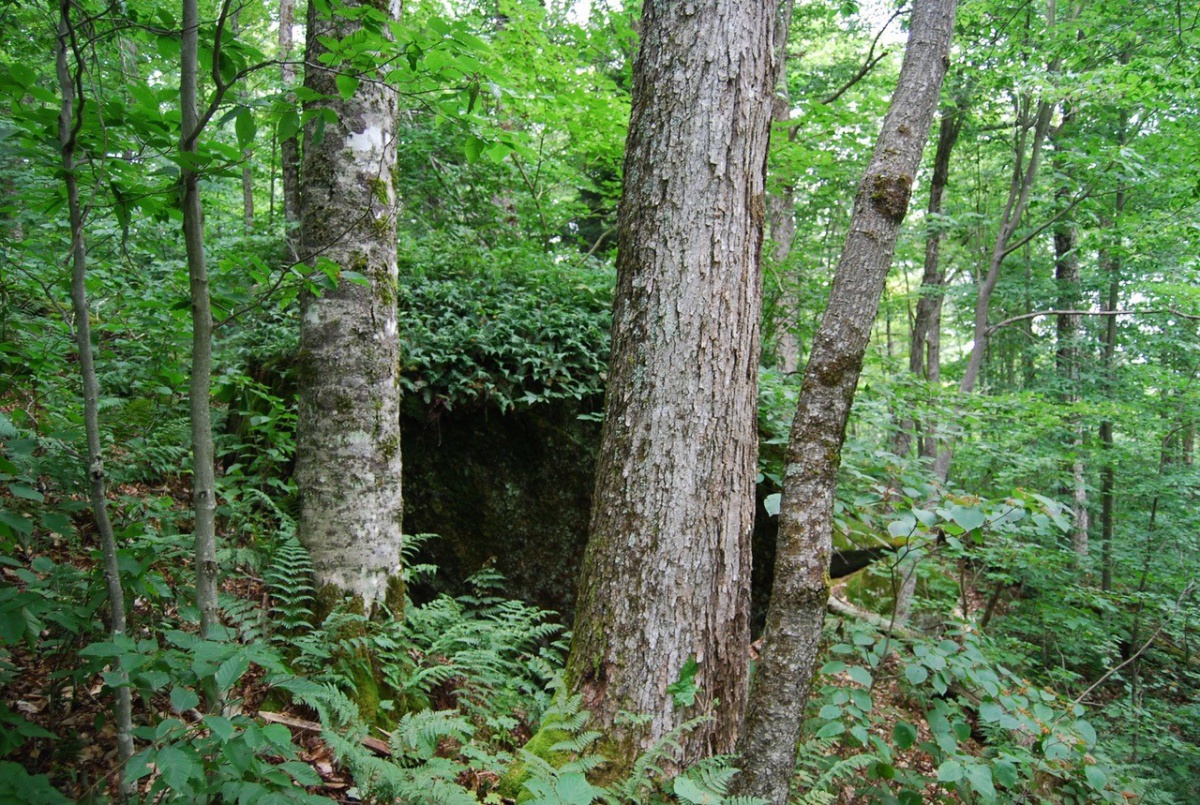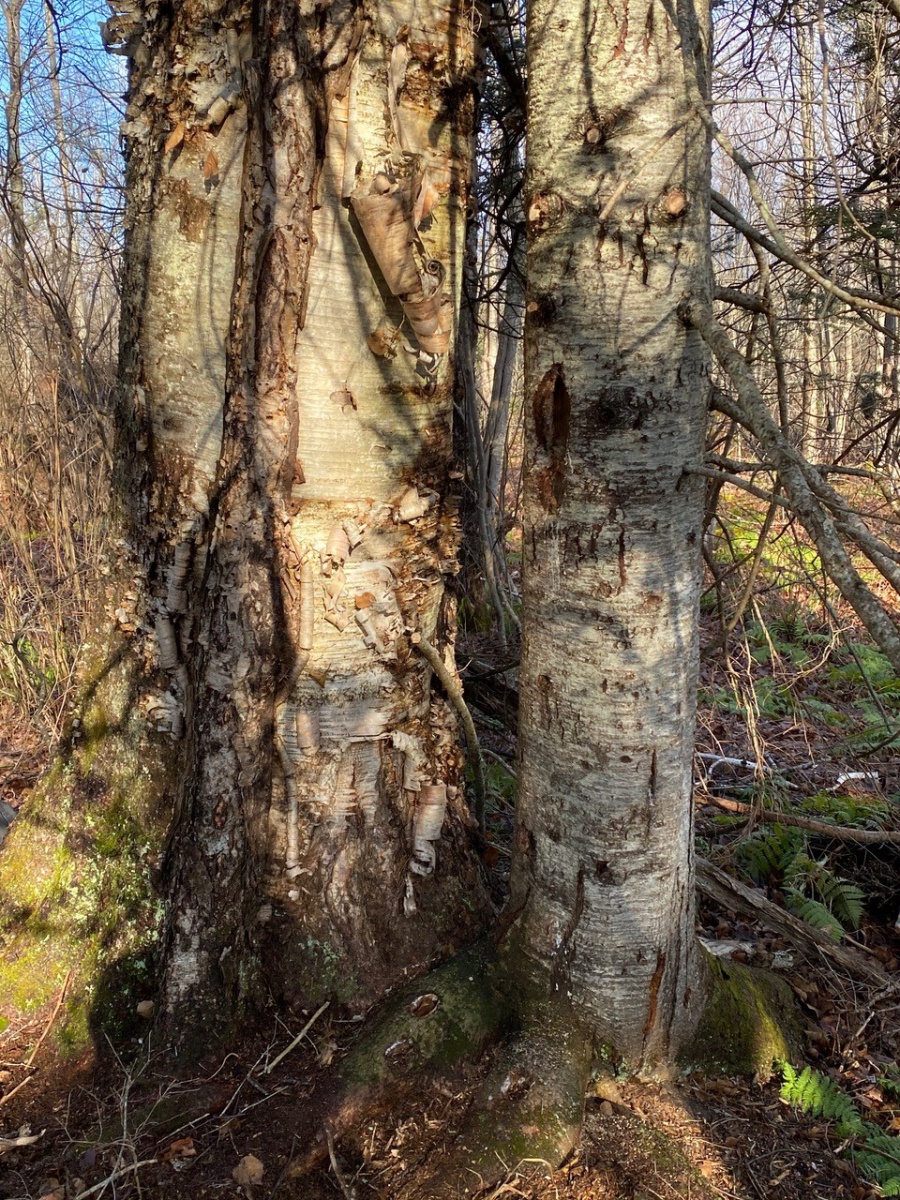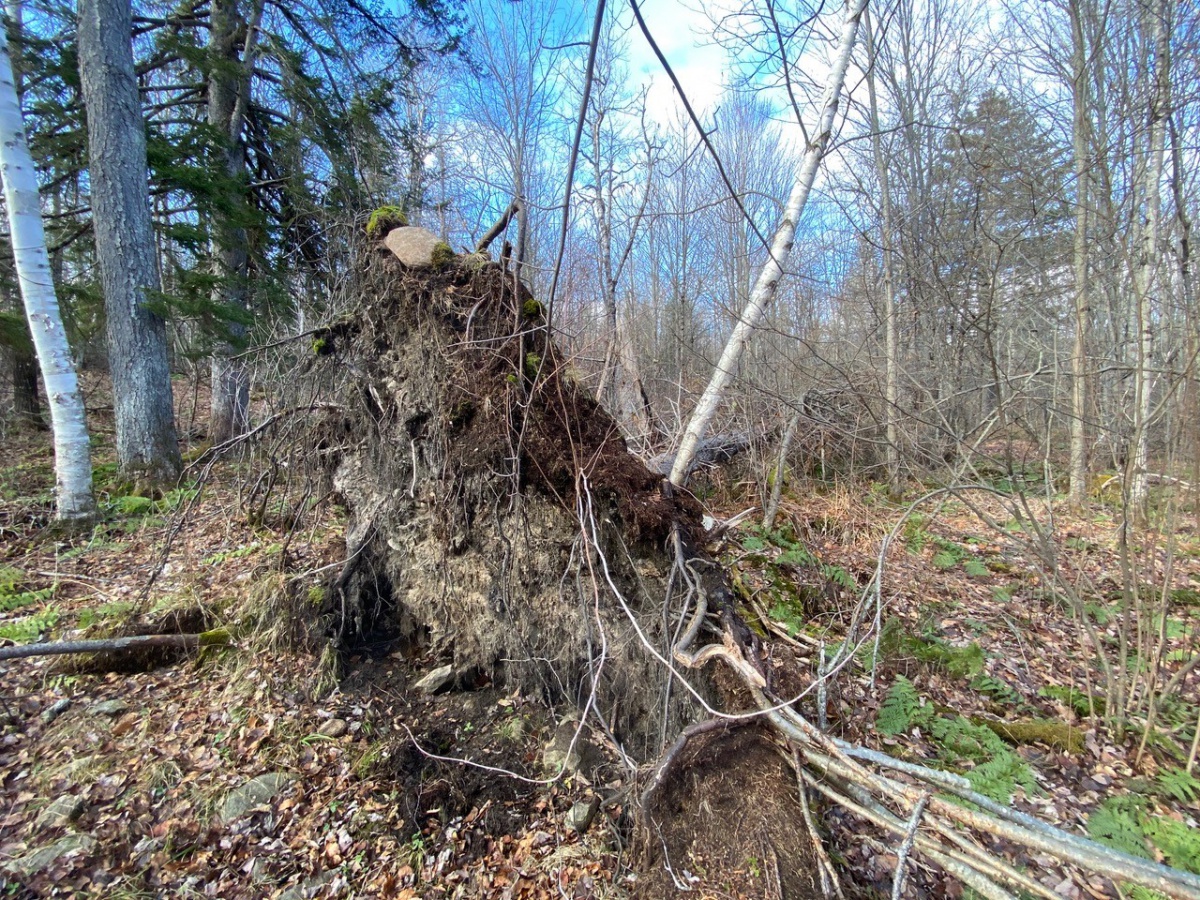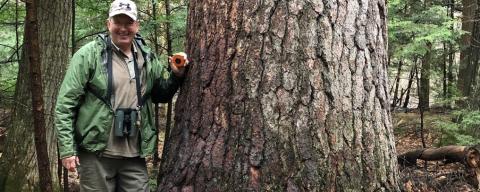Finding Old-Growth Forests in New Hampshire
What is an old-growth forest, and what are its characteristics in New Hampshire? There is a great deal of confusion as to what is an old-growth forest. Old-growth is one of a variety of other names. Those names, some with implicit bias, include over-mature, decadent, ancient, primeval, virgin, primary, old forest, or late-successional. I do not use the term climax forest, which implies a steady-state condition for hundreds of years, or even in perpetuity. Old-growth is the term most commonly used.
As a forester and naturalist, I have had a life-long interest in forests. I have been fortunate to have been able to visit many old-growth forests throughout the United States. I have long recognized the need to preserve these old forests for many reasons. The scientific value of old-growth forests is well known, and several research forests have been created to study the dynamics of these original forests. There are many other reasons to protect old-growth forests, including preserving spiritual, cultural, historical, and biological values.
The term old-growth originated among forest researchers in the 1970s to describe "forests at least 150 years old that developed a complex structure, characterized by large, live, and dead trees; distinctive habitats; and a diverse group of plants, fungi, and animals." There are many other definitions of old-growth forests, and that is because each region has its parameters. For example, the bristlecone pine forests in California's White Mountains have 2,000-year-old trees that are not considered very old.
Old-growth forests are rare in New Hampshire, the second most forested state (79%) in the United States after Maine (83%), according to a 2019 analysis by the US Forest Service (https://www.fs.fed.us/nrs/pubs/ru/ru_fs241.pdf).
This inventory indicates that NH has 4,691,524 acres of forest land. While it depends on how you define old-growth forests, it is likely we have much less than 1%, or 46,915 acres, of old-growth forest currently left in the state. We likely have only a tenth of a percent of old-growth forest left, making it very rare. By 1910, most of the old-growth forests were gone in New Hampshire.
My definition of an old-growth forest in New Hampshire is “a natural forest that has developed over a long period, generally 150 years or more, and has not been disturbed by stand-replacing events such as logging, windstorms, or forest fires.” My definition is not perfect but is a good starting point for discussion.
These are the characteristics of an old-growth forest that landowners and forest lovers can use to help identify such a forest:
- Old Trees: Numerous trees 150 years of age or older, with some nearing the maximum biological age, are typical of old-growth stands. Aging large trees can be problematic because of the tree's large diameter requiring a huge increment borer and the likelihood that the center or heartwood is absent.
- Large Trees: Numerous large canopy trees 20" in diameter at breast height (DBH) with some trees exceeding 30" DBH. The bark of some of these old trees looks considerably different than younger trees.
- Lack of Human Disturbance: No evidence of logging, cellar holes, stone walls, roads, or other human disturbance.
- Structural Diversity: The forest is a complex mix of old, young, and middle-aged trees at different canopy levels.
- Snags: Large standing dead trees are common. Snags provide homes for wildlife, giving meaning to the saying of "there's life in dead trees."
- Coarse Woody Debris: A term used to describe dead woody material and trees lying on the ground and is larger than 3" DBH.
- Pit and Mound Topography: Pits and mounds are features that form when a large tree falls over. The pit forms where the root mass and soil are pulled out of the ground, while the mound is what is left of the root mass and soil that breaks down over time. This feature creates a habitat for diverse plants and animals. Pits and mounds can also be present in second-growth forests, so it is not entirely diagnostic of an old-growth forest.
- Nurse Logs: Downed logs that have several trees growing on the decaying log.
- Canopy Gaps: Small openings in the canopy are visible between the tree crowns.
- Broken-topped Trees: Old trees often have broken tops.
- Mosses and Lichens: Old-growth forests often have an abundance of lichen and moss species on trees, decaying logs, and on the ground. Some lichens are indicative of old-growth forests, especially the “stubble” or calicioid species.
An excellent guide to help you identify an old-growth forest is Forest Forensics: A Field Guide to Reading the Forested Landscape by Tom Wessels. Another book by Tom is Reading the Forested Landscape: A Natural History of New England. Check with your local library or book store for a copy of these books.

People sometimes expect walking in an old-growth forest is like walking in a cathedral of big and tall trees. Sometimes it can feel that way, especially in some of our hemlock and white pine forests. But more often, you will find a chaotic scene of downed trees, areas of thick undergrowth, and trees of varying sizes. Walking off-trail can be difficult. Once a person learns to value old-growth forests,he or she will appreciate the aesthetics of the forest's complexity.

How many old-growth forests do we need? This decision is for the landowner or local, state, or federal agency to determine. I feel we should strive for 10% of our forest land to be in old-growth condition. Old-growth forests are not in a permanent state. These forests are subject to major natural disturbance events, including windthrow, insects, disease, and to a lesser extent, forest fire. With less than 1% of our forests now considered old-growth, you can see how a natural disturbance could easily wipe out some of what we have left.

We should identify and preserve what old-growth we have and work towards encouraging future forests. We can help accelerate the creation of other old-growth forest stands in second-growth stands. Managing second-growth forests to create old-growth characteristics is controversial to some. Forest ecologist Bill Keeton from the University of Vermont has pioneered a forestry practice called Structural Complexity Enhancement (SCE). This practice enhances structural and age class diversity by emulating natural disturbances in second-growth forests.
Not everyone can afford to preserve tracts of land for future old growth. But from my experience, you should set aside those difficult to harvest stands along streams and steep or rocky ground. Working in the woods, I have found that 10% of the timber harvest area gives you 90% of the problems. Work with your forester and consider not logging unique stands in your management plan.
In addition to identifying opportunities to protect existing or future old-growth on private land, we should encourage local, state, and federal agencies to identify, designate, and protect such forests on public lands. We already have varying levels of protection depending on the agency involved. Ideally, we should have at least one old-growth forest designated in each of our ten counties.
The Old-Growth Forest Network aims to do just that -- identify and protect old-growth, native forests from logging so people can experience biodiversity and the beauty of nature. You can nominate a private, community or network forest for inclusion in the old growth forest network here: oldgrowthforest.net/nominate-a-forest.
The Eastern Old-Growth Forest Conference is being held September 21-23, 2023 in Moultonborough, NH.
David’s professional background was with the U.S. Forest Service, where he worked for 33 years until retirement in various positions and locations across the country as a Forester, Silviculturist, and Forest Fire Management Officer. David worked for 20 years on the White Mountain National Forest. Since his retirement, he works for RAVEN Interpretive Programs as a Naturalist. David has also worked as an expedition ship naturalist in Alaska and Iceland. Among his many volunteer roles David is a UNH Extension Volunteer for NH Big Tree, Coverts, and Speaking for Wildlife programs.
David is a co-author of Forests for the People: The Story of the Eastern National Forests. He served as technical advisor for the documentary film The People's Forest, and has written numerous magazine and journal articles on forest history. He recently completed a goal to visit all 175 National Forests and National Grasslands located in 41 different states.

